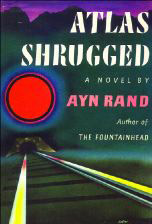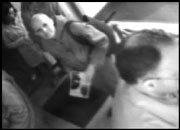You are the age you are now but in 1937. There is no television, of course, which accounts for something—as well as (since we’re playing this game) no nylon, no ballpoint pens, and no Bloody Marys (they were invented after World War II)—and the best-selling books of the year include Margaret Mitchell’s Gone With the Wind, Virginia Woolf’s The Years, W. Somerset Maugham’s Theatre, and John Steinbeck’s Of Mice and Men.
According to Michael Korda, author of Making the List: A Cultural History of the American Bestseller 1900-1999, “Those who think of the best-seller list as representing the lowest common denominator have never studied the best-seller list, and fail to understand that Americans want to be challenged and entertained.”
The Nightstand fails to understand, then, what happened in 2002—forget about challenged, we weren’t even entertained—although America has been trending in this direction for years. It’s depressing to flip through Korda’s book and scan the list of top sellers in the 1960s (a decade when Salinger’s Franny and Zooey, Lee’s To Kill A Mockingbird, Porter’s Ship of Fools, McCarthy’s The Group, Bellow’s Herzog, Updike’s Couples, and Roth’s Portnoy’s Complaint were all in the top five, many for years at a time) because, by comparison, the ’90s were horrifying.
Have a moment? Let’s take a look back, shall we? Say, 1992. The top five best-selling books are by King, Grisham, King, Steel, and Steel. Kind of resembles 1993: Waller, Grisham, Waller, Clancy, King. Or 1994: Grisham, Clancy, Redfield, Steel, King. Or, hell, 1995: Grisham, Crichton, Steel, Evans, Steel. While we’re at it, here’s 1996: Grisham, Clancy, King, Crichton, Bachman. As unfamiliar as you may be with them, the above listed names are some of the most popular American writers of our time (Redfield wrote The Celestine Prophecy; Evans, The Christmas Box; Bachman, an action-horror novel called The Regulators).
Korda seems to think the yearly lists have always represented an equality of good and bad taste, but we don’t buy it, and it strikes us as nothing short of a miracle that Alice Sebold’s The Lovely Bones—a book that doesn’t concern briefs and pelicans or whispering horses—came out on top in 2002. It’s officially No. 1, the most successful book of the year, ahead of the fiction pack that also includes (according to Barnes & Noble’s tally) another clan dispatch by Jean M. Auel, a thriller by Tom Clancy, two courtroom clich鳠by John Grisham, a tree-lined t괥-୴괥 by Nicholas Sparks, and the movie-driven rearing of Ya-Ya‘s ugly head.
No one ever imagined that The Lovely Bones, the first novel from a relatively unknown author who doesn’t suck, would sell (and it continues to sell) so well. (It’s on all the local bookstores’ 2002 best-seller lists, too.) This phenomenon is not unusual, however, according to Korda. He asserts that while many of the books on the list are by big authors whose success is predictable, “at least half of the books”—he’s being generous now—”on any given week’s best-seller list are there to the immense surprise and puzzlement of their publishers. That’s why publishers find it so hard to repeat their successes—half of the time they can’t figure out how they happened in the first place.”








